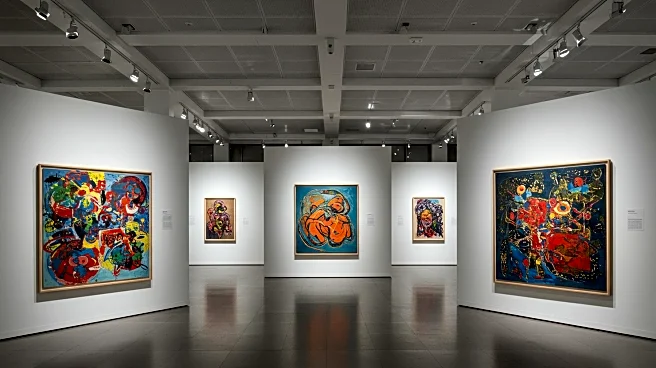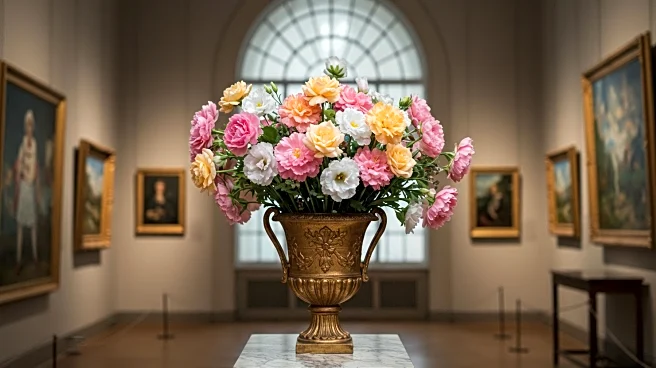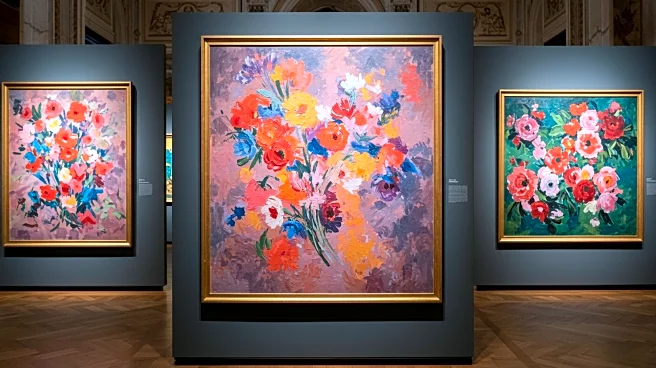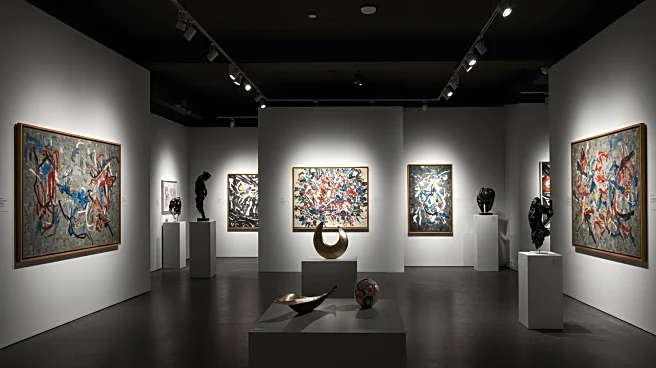What is the story about?
What's Happening?
Doris Lockhart Saatchi, a prominent art critic and collector known for her cutting-edge taste, has died at the age of 88. Saatchi was celebrated for her keen eye and influential role in the art world, writing for publications such as House and Garden, Artscribe, and The Independent. Her collection, amassed with her former husband Charles Saatchi, was renowned for its exceptional examples of modern art. A notable portrait of Saatchi by Robert Mapplethorpe, now part of the National Portrait Gallery’s permanent collection, exemplifies her impact on the art scene. Her aesthetic was characterized by a preference for Minimalism and a stripped-down approach to art.
Why It's Important?
Doris Lockhart Saatchi's passing marks the end of an era for the art world, where her influence as a critic and collector shaped modern art appreciation and collection practices. Her contributions helped elevate contemporary art and artists, fostering a deeper understanding and appreciation of Minimalism and avant-garde works. Saatchi's legacy continues to inspire collectors and critics, emphasizing the importance of innovative and boundary-pushing art. Her impact is felt in the collections she helped build and the critical discourse she influenced, leaving a lasting imprint on the art community.
Beyond the Headlines
Saatchi's approach to art collection and criticism highlights the cultural and aesthetic shifts in the late 20th century, where Minimalism and modern art gained prominence. Her ability to identify and promote groundbreaking art reflects broader trends in cultural consumption and the evolving tastes of art patrons. The portrait by Mapplethorpe underscores the intersection of art and identity, illustrating how personal representation can transcend individual perception and become a cultural artifact. Saatchi's legacy prompts reflection on the role of collectors and critics in shaping art history and cultural narratives.
AI Generated Content
Do you find this article useful?











